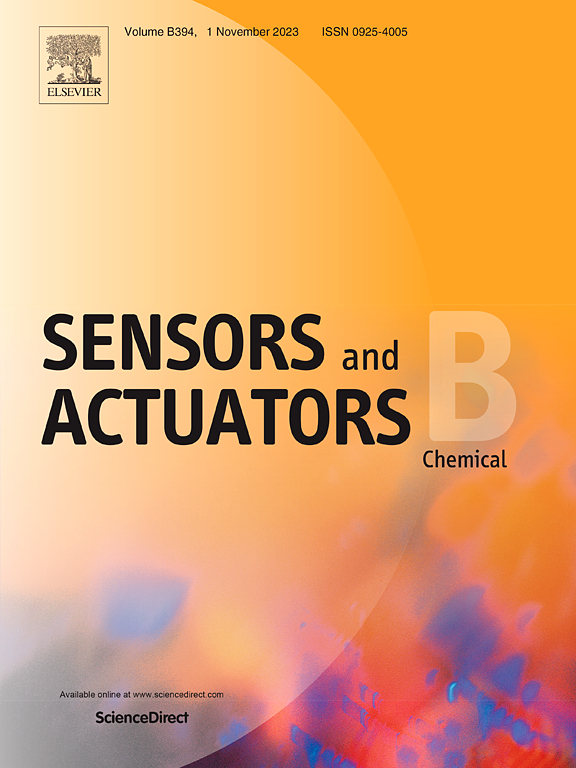Determination of TyG index in the whole blood using mid-infrared fiber evanescent wave spectroscopic sensor
IF 8
1区 化学
Q1 CHEMISTRY, ANALYTICAL
引用次数: 0
Abstract
The triglyceride-glucose (TyG) index has emerged as a reliable surrogate marker for assessing insulin resistance, emphasizing the need for a rapid and precise technique to quantify blood glucose and triglyceride levels. In this study, we have developed a mid-infrared fiber evanescent wave spectroscopic (MIR-FEWS) sensor, tapered from Ge10As20Ga5Se65 infrared fiber, for the simultaneous analysis of both triglyceride and glucose. This innovative sensor achieves a low limit of detection (LoD) of 1.18 mM for glucose and 0.23 mM for triglycerides, respectively, showcasing its possibility for blood test. Moreover, the sensor exhibits excellent repeatability and stability, validating its applicability for determining the TyG index in whole blood. When applied to measure the TyG index in Sprague-Dawley (SD) rats, the results closely align with those from commercial blood glucose and lipid meters, underscoring its accuracy. The proposed MIR-FEWS sensor has multiple advantages, including multi-component analysis capabilities, high sensitivity, straightforward operation, label-free measurement, and cost-effectiveness, thereby presenting a novel and promising technique for rapid and reliable TyG index detection.
中红外光纤倏逝波光谱传感器测定全血中TyG指数
甘油三酯-葡萄糖(TyG)指数已成为评估胰岛素抵抗的可靠替代指标,强调需要一种快速精确的技术来量化血糖和甘油三酯水平。在这项研究中,我们提出了一种中红外光纤倏逝波光谱(MIR-FEWS)传感器的开发,该传感器由Ge10As20Ga5Se65红外光纤变细,用于同时分析甘油三酯和葡萄糖。该传感器对葡萄糖和甘油三酯的最低检测限(LoD)分别为1.18 mM和0.23 mM,显示了其用于血液检测的可能性。此外,该传感器具有良好的重复性和稳定性,验证了其用于测定全血中TyG指数的适用性。当应用于SD大鼠的TyG指数测量时,结果与商用血糖和脂质仪的结果非常接近,强调了其准确性。所提出的MIR-FEWS传感器具有多组分分析能力强、灵敏度高、操作简单、测量无标签、成本效益高等优点,为快速、可靠地检测TyG指数提供了一种新颖、有前景的方法技术。
本文章由计算机程序翻译,如有差异,请以英文原文为准。
求助全文
约1分钟内获得全文
求助全文
来源期刊

Sensors and Actuators B: Chemical
工程技术-电化学
CiteScore
14.60
自引率
11.90%
发文量
1776
审稿时长
3.2 months
期刊介绍:
Sensors & Actuators, B: Chemical is an international journal focused on the research and development of chemical transducers. It covers chemical sensors and biosensors, chemical actuators, and analytical microsystems. The journal is interdisciplinary, aiming to publish original works showcasing substantial advancements beyond the current state of the art in these fields, with practical applicability to solving meaningful analytical problems. Review articles are accepted by invitation from an Editor of the journal.
 求助内容:
求助内容: 应助结果提醒方式:
应助结果提醒方式:


